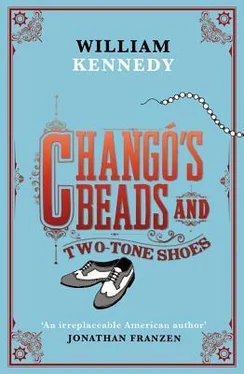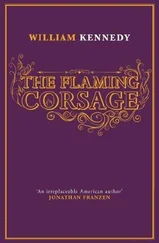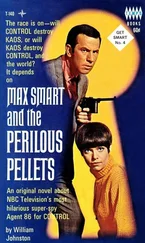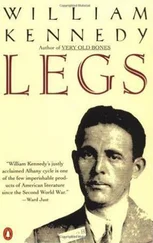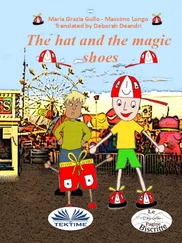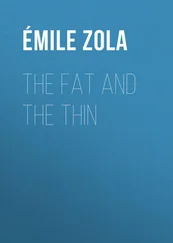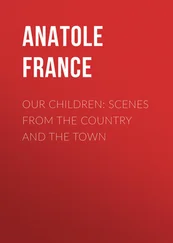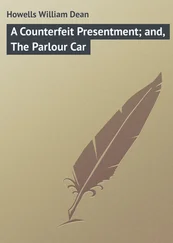“It really isn’t his,” she said. “It’s a stolen car.”
“Oh, then there’s no problem. They never look for stolen cars.”
“He said to park it someplace safe and wait for a call to tell someone where it is.”
“You’re in serious danger in this car.”
“I’ve been in serious danger for many months. Get out if you like.”
“I said I’d take you home. Let’s go home. Your home.”
“I can’t take this car home.”
“Then take it someplace and let’s park it.”
She pulled out into traffic, which was just beginning to move again. Hundreds were coming out of stores and offices, slowly and with curiosity, street vendors were back selling peanuts and peeled oranges, and two overfull buses were moving. People were walking backward in the street hailing rides.
“I can’t give anybody a ride,” Renata said. “They might be killed if the police stop us.”
“No point in getting anybody else killed,” Quinn said.
She turned onto the Prado, still in tears. But the mood of her eyes was different from the rest of her face, less sad, more on edge, and he saw her capacity for dualities. Of course. Two lovers going on three, minus one.
“How were you in serious danger for many months?” Quinn asked.
“Riding with Diego. We would rent rooms for his friends to hide in, or to use for hiding guns. We said we were man and wife. I think we would have been.”
“Then you’re a genuine gunrunner,” Quinn said.
“Yes, and so are you. There are guns in this car. I knew as soon as I saw it. The rear end is very low.”
Her passion had dried her tears and her eyes were evaluating how this sudden complicity with guns would change Quinn’s expression.
“Do you like being a gunrunner?” she asked.
“It’s delightful. I didn’t know how beautiful my fellow gunrunners could be.”
“Are you afraid of dying if the police catch us?”
“Not at all. I’ll explain I’m writing a story about gunrunning.”
“They will kill you anyway. They kill anybody with guns, anybody.”
Quinn the gunrunner had fallen in love before he’d said hello to this woman, who seemed as guileful as she was innocent, primal polarities. She had offhandedly exposed him to intimate elements of her love affair with living-and-dead rebels, and had speculated aloud that Quinn might be on a waiting list. Her legs and thighs were on exhibition, skirt riding high as she drove, that skirt soiled from her time on the museum floor with seventy tourists. How had she kept them horizontal and alive? A persuasive presence. Now she confesses her clandestine movement of arms and turns him into an accomplice. Was this sudden inadvertence, willful intent, an inevitable truth she feels they should share? Who is he to be her confessor? Forces are in play, Quinn, which you are only beginning to confront. No American women in your life like this one, who’s taken up residence in your soul overnight: invasive onset by a creature who commandeers the imagination: exotic, perhaps deadly. What did you get yourself into?
“You are ready to die,” he said to her. “Do you know why?”
“Because I believe in the people I’ve been with. And because it is a form of love. It is not death you love but the nearness of death to the people you love and to yourself. And because it thrills me.”
“You know what would thrill me?”
“Tell me.”
“If you parked this goddamn car.”
“I know the perfect place,” she said. “They will never look there for guns. A beautiful house and it is closed. The owner is a very rich American woman who comes here only in winter. My sister lives nearby and we can borrow one of her cars.”
They rode out Fifth Avenue and past the Havana Yacht Club, where Renata was a star golfer. They moved through Country Club Park where the American, British and Cuban social elites for decades had built their homes on rolling acres and great lawns that were emulations of the fairways of the Country Club’s golf course. Renata turned into a driveway bordering a fairway and toward an elegant white-stucco Spanish villa with a half-dozen adjoining buildings.
“They had many parties here,” she said. “I came as a child and watched them at night on that hill, dancing the conga with torches.”
“Who was this woman?”
“Rene Fellows. She painted and wrote things and had money from her husband who ran a shipping line. She was one of Hemingway’s mistresses and she was beautiful. People say she had many men.”
“That seems to be a popular pastime.”
She drove to the rear of Rene Fellows’ house and parked in the covered driveway of a secondary building. She faced the car outward so anyone picking it up would not have to waste time turning it around. They were out of the sight line of neighboring houses. She put the keys in the ashtray.
“Esme lives beyond those trees.”
“I’d like to see the guns.”
Renata retrieved the key and opened the trunk on one Browning automatic and tripod, six machine guns, several belts of cartridges, and six.45 caliber pistols.
“I remember the Browning and the.45s from the army,” Quinn said, “but I never dealt with those machine guns.”
“They are old Thompsons, and they fit under the front seat of this car. I’ll tell you a story about that some day.” She closed the trunk and put the key back in the ashtray.
“How much do you pay for this many guns?”
“Thousands. I never do that part of it.”
She led Quinn through a stand of banyans and flamboyans, laurels and coconut palms and a heavy growth of manigua, and when they came out on the crest of a hill she pointed toward a spectacle: an Italian Renaissance mansion with stairs and terraces sculpted into a hillside that ran to the beach.
“My big sister’s ugly palace,” Renata said. “It is so big she had to put in an elevator. She married a rich Spaniard who died in a plane crash and left her a fortune. Her house has fourteen bedrooms. And Batista. She loves Batista because of his power. I think she would make sex with him if she could. I wonder if she has. I try very hard to love her the way I used to. Her second husband Moncho I love very much. They were only married six months and she left him because he was never home. He is a lawyer and a crazy person and is one of my favorite in-laws. He visits Esme all the time, and they get along better than when they were married.”
“Where does Max come into this? I thought he was your brother-in-law.”
“Max was her first husband but she divorced him in 1953. He moved back in when the Spaniard died. But they aren’t married.”
“Your sister thinks in multiples, like you. What will you tell her about how we got here?”
“I will think of a lie. I am a very good liar and I am smarter than she is. She is older and more beautiful, but she is so beautiful I think she is ugly like her house.”
Renata rang the bell and Felix the gardener opened the great wooden gates and greeted them. He said he’d let Esme know they were here, and then Renata and Quinn went into the main salon, which was dominated by what Quinn assumed was a portrait of Esme, standing on a seven-foot easel. Quinn looked for the beautiful ugliness that Renata had suggested, but he found only beauty and a strong resemblance to Renata. Esme had been married only six months when she sat for the portrait by the Spanish painter Berenguer, who had come to Cuba and expressed fascination with her provocative beauty. He made many sketches of her and asked her to come to Spain for a sitting. The finished portrait placed Esme in a spectral mode, a regal, standing presence, wearing a vexed expression and with her left hand pointing to the center of herself in an ambiguously sensual gesture. Berenguer said she wears her persona like a weapon, aggressive behavior for a great beauty. It was the most popular work in the artist’s subsequent exhibition and Berenguer did not want to sell it. Esme’s husband offered twenty-five thousand but Berenguer refused to sell. After months of persuasion he finally yielded the painting to Esme as a gift. How did Esme persuade him?
Читать дальше
